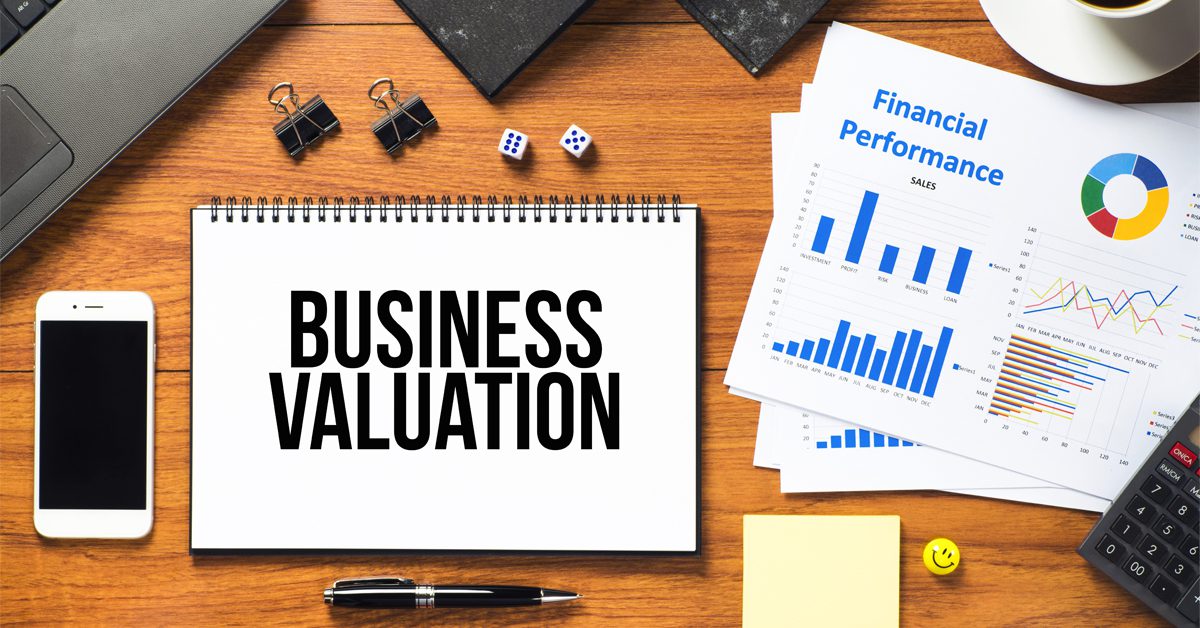Cannabis business valuations are an important area of expertise for entrepreneurs to understand at any time during their business ownership, but most importantly at the beginning!
While the methods of determining a valuation may not vary too much, what you do as a business owner can make a big difference along the way. Read more to learn the important details on business valuations.
To write this educational article, we had the opportunity to interview Greg Ansel, Partner at Armanino LLP, who is a trusted CREC Directory member. Greg has vast experience in valuations for cannabis, as well as business valuations, stock option pricing analyses, various transaction-related services, purchase price allocations and goodwill/impairment analyses.
 On Wednesday, 5/27/20 we hosted an industry webinar with Mr. Ansel to present this information to our audience and answer specific questions on cannabis valuations.
On Wednesday, 5/27/20 we hosted an industry webinar with Mr. Ansel to present this information to our audience and answer specific questions on cannabis valuations.
We recommend you watch the webinar below, read our interview recap, and then reach out to the experts at Armanino with any further questions or to seek more info on valuation services.
Table of Contents – Cannabis Business Valuations
- What to Look For in Cannabis Valuations – Webinar Video Recap
- About Greg Ansel, Partner at Armanino LLP
- Business Valuations Explained
- Most Common Valuation Methods
- Tax Advantages / Liabilities
- Determine Your Goals for a Valuation
- How Are Cannabis Business Valuations Different?
- How to Prepare / Plan / Exit Strategy
- When to Seek Professional Assistance
Watch Webinar – What to Look For in Cannabis Valuations
This recap video shows the entire presentation and follow-up questions asked by our audience. Read through this article and then ask questions at the bottom if you still want to know more!
 About Greg Ansel – Greg focuses primarily on high-tech and biotechnology companies, and recently has valued numerous cannabis companies, he also has vast experience valuing businesses in many industries. These include enterprise software and SaaS entities, as well as entities in the data mining, big data, security, optimization and gaming industries, and drug discovery, medical devices and other life science segments.
About Greg Ansel – Greg focuses primarily on high-tech and biotechnology companies, and recently has valued numerous cannabis companies, he also has vast experience valuing businesses in many industries. These include enterprise software and SaaS entities, as well as entities in the data mining, big data, security, optimization and gaming industries, and drug discovery, medical devices and other life science segments.
About Armanino LLP – Armanino is one of the 25 largest U.S. accounting and consulting firms. They are one of the first firms to have a dedicated cannabis practice and one of the few big firms that serves the cannabis industry. Committed to building long-term partnerships with their clients, they provide a full range of services to help cannabis companies improve business operations, including audits, tax assistance, valuations, equity management, strategy and transformation, and technology consulting.
Business Valuations Explained: Learn Methods, Timelines, Goals, Taxes, Strategy, and Cannabis Specifics!
A business valuation or appraisal is defined as when a third-party firm analyzes a client’s business and financial plans, projections, and history to determine a fair market value.
Each company has its own unique set of factors to weigh, and no two valuations are ever the same.
Fair market value is hypothetical, and a valuation is typically an independent opinion.
When different people look at the same data, they can come up with very different valuations. It is not easy to say what is accurate and you often must make assumptions. Even in different models, you must come up with reasonable assumptions, which are only as good as the data provided. So make sure your business data is organized and accessible.
We asked Greg, what events trigger a valuation? “Strong financial performance; less regulations; strong overall micro- and macro-economic performances; and a healthy M&A (merger and acquisition) market for the industry.”
Why Would I Want a Business Valuation?
 The most common reasons to get a valuation are incentivizing employees, shareholder buyout/buyin, estate tax planning, internal disputes, and financial reporting requirements.
The most common reasons to get a valuation are incentivizing employees, shareholder buyout/buyin, estate tax planning, internal disputes, and financial reporting requirements.
As an example, during economic issues you may be forced to make pay cuts and are looking for creative ways to reward and compensate hard-working staff.
You may select stock options as an alternative form of compensation and to serve as a morale booster that gives an employee a greater stake in the future of the company. You will therefore need to determine the current share price when offering the stock options compensation package.
Or maybe you have an internal dispute that leads to a shareholder buyout and need to determine the value of their shares to remove from the company.
If your business is in the middle of an M&A (merger and acquisition) you’ll find that the investors and acquirers likely do their own valuation to determine the buying price. It’s unusual you would do multiple opinions, but if unhappy, you might go back to get another valuation.
For a more successful valuation, it is important to have the employees and the company aligned on strategic initiative. When you include both, they will participate more in the growth and add more value to the company. Otherwise, it could make operations more difficult, without everyone moving in the same direction.
How Long Does a Valuation Take?
A business valuation can take 3-4 weeks or even longer, depending on financials and their stage of growth. It is not something that can be rushed, as that can affect the outcome.
Are Business Valuations for Everyone?
Yes, there are many reasons why you would get a valuation performed, and every business can have some model of valuation applied to their current stage of growth.
One misconception we learned from Greg is that business owners can have the attitude that “there is no way to value my business because I’m so unique.” By using cash flows and comparisons to other businesses, there is always a way to estimate the value of a company.
Most Common Valuation Methods
Now that you understand why, let’s dive into the how of business valuations.
There are 3 common approaches used and no technique is intrinsically better than another, but the chosen valuation method and key underlying assumptions will impact the end result.
Types of Business Valuation Methods:
- Income Approach
- Market Approach
- Cost Approach
The income approach is most common and as the most typical application is the discounted cash flow method. It uses the entity’s multi-year projections of future cash flows which are discounted back to present with a risk-adjusted discount rate. Theoretically it is the most accurate method, if assumptions are supportable, but is only as accurate as the assumptions.
The market approach is also common and compares the target’s financials to those of similar companies. Greg informed us that “Buyers will look at statistics such as price-to-earnings (P/E), earnings before interest and taxes (EBIT), earnings before interest, taxes, depreciation and amortization (EBITDA), and price-to-revenue (P/R) multiples. Insights can also be gained from recent sales, M&As, and other related transactions as comparisons.”
We asked Greg, do multiples change in the cannabis industry? “This is more challenging to understand given the lack of public data in the US. We can observe those in Canada or other markets and assume those in the US will be highly correlated. Further, we can observe multiples in complementary industries and draw parallels and also draw correlations to overall market multiples. However, in general, the more growth and potential profit will yield higher multiples.”
The cost approach estimates the value of assets and subtracts the liabilities. By focusing on the balance sheet to determine the value, this makes it a great starting point, but certain intangible assets will not be included. Examples of intangible assets are technology, customers, and goodwill. This approach is often used for non-operating business, potentially early stage companies or other companies that have not yet created a tangible value.
Managing the data of your earnings potential, forecasts, and providing strong statistics of financials will greatly support your valuation. It is a complex process and it is important not to get too excited about the “green rush” so that you can keep the valuation grounded and realistic.
By using cash flows and comparisons to other businesses, there is always a way to estimate the value of a company. – Greg Ansel
Tax Advantages / Liabilities for a Cannabis Valuation
This is where it gets rather complicated with cannabis business valuations and 280E tax code.
You can read more about 280 E Expense Tax Code in CA on our blog or in Armanino’s blog, Using IRC Section 471(c) to Reduce the Impact of IRC Section 280E on Cannabis Companies for advice on handling this code that does not allow businesses to make certain deductions.
By making a few adjustments to your tax strategy and/or your operating strategy, you can boost your profitability to entice potential buyers.
Often a business will make decisions on expenses that will deflate profits to lower tax liability, but when looking at an acquisition your profitability is an important aspect the buyer is considering. You want to showcase your best assets and have accurate financial statements on your county, city, state taxes to determine reliable after-tax net income.
Greg provided the example, “Is your income statement normalized, or is it impacted by large tax deductions? Accelerating depreciation, for instance, can minimize a company’s profits for the year.”
This type of planning is essential as you begin the process of preparing for a valuation and brings up the important question of “what are your business goals”?
Determine Your Goals for a Valuation
By focusing on your long-term business goals, you can achieve the best possible business outcome from a valuation perspective.

Think about why you want a valuation now and when you will be considering another valuation down the road, so you can have your books prepared.
In the cannabis industry we are expecting to see a lot of future consolidation as businesses run out of operating capital, are able to get a large sum for their license or were just not prepared for the rigors of running a cannabis business.
There is currently a clash between the semi legal / traditional market of the past and the industry professionals not understanding the cannabis world. This can lead to business disputes and further consolidation or buyouts of partners.
Who is Your Intended Buyer?
Depending on your goals and the buyer you want to appeal to, you will make different decisions leading up to your valuation. The typical buyers are venture capitalists or corporate buyers.
Venture capitalists (VCs) are often looking to exit their investment in 3-5 years. Greg explained that “VCs typically place a high value on the potential target’s growth potential from a revenue and EBIT/EBITDA perspective”. This leads to a heavier weight on the business’ projected performance vs. historical data.
Corporate buyers likely will have a longer expectation for their investment and exiting the business for a return will not be the main reason for purchasing your business. “Your market share, repeatable sales, technology, team / employees, cash flow and/or time to market advantages.” Greg explained are the key factors outside of growth that will excite the corporate-style sales.
Remember to keep looking at the big picture and not get too wrapped up in the details of the acquisition. A healthy operating business with a strong management team, in-depth financials, and consistent cash flow is often your best bet for maximizing sales price.
“It is not accurate that cannabis business necessarily equals a higher valuation.” – Greg Ansel
How Are Cannabis Business Valuations Different?
Since the cannabis industry is still relatively new and brand new in some states, the majority of entities will be considered growth mode or early stage businesses.
 With minimal historical results it can be more challenging to value an early stage company and valuation professionals need to rely more on data from outside the US and use models like the DCF more frequently.
With minimal historical results it can be more challenging to value an early stage company and valuation professionals need to rely more on data from outside the US and use models like the DCF more frequently.
Greg reinforced, “It is not accurate that cannabis business necessarily equals a higher valuation.” Many assume that because you are in the cannabis industry that you should expect a higher than usual valuation.
1. Forecasted revenue can be complicated since historical cash flow may not represent future cash flow in cannabis businesses. If the business has a temporary license then that presents a much higher risk than a permanent license. It is also important to be looking at the permits a business maintains. As an example, for cultivation, a permanent license with the correct conditional use permits will lead to a much higher valuation than temporary.
2. Cannabis businesses also have significantly higher upfront costs due to expensive equipment, overpriced cannabis real estate leases, legal fees, lengthy application processes and other business formation needs not common in other markets.
3. Remember how important it is to understand your financials. If you can fully articulate which are one-time expenses or helping growth, then you can better predict future profits with these excess expenses removed. This will help to yield more confidence in future growth by explaining these expenses that were more startup costs than ongoing requirements.
4. Another misconception by business owners is that being in a bigger market is a good thing for your valuation. For example, if you are in Los Angeles, you may have a very large cannabis market, but you also have a lot of competition and an argument could be made that you’d get a higher valuation in a city with fewer licenses and a smaller population. The jurisdiction, license availability, market size, medical vs. recreational sales, other related businesses, and future potential are all considerations.
5. To get an estimate of your valuation, you can use the market approach, but values can vary drastically by municipality, state or country with varying license amounts and market sizes. Also, publicly traded info is not often available for cannabis businesses, so you have to draw parallels to other industries. An example of a complementary and volatile industry would be cryptocurrency. It is in a similar growth stage and the financials / historical metrics are not readily available, as well as fluctuating legality in different regions. Other possible examples are biotech, high-technology, enterprises with IP, startup companies and other businesses with products that have large potential, but have not yet obtained widespread acceptance.
6. Your relationships are very important in this industry. Do you have a strong banking relationship or have you struggled to find a reliable partner? This could hamper growth. Do you have access to future capital and investors? Are you in debt to many investors already? Is your legal and compliance team experienced in your area? Are your vendors reliable and licensed?
7. Do you have a strong business model? How is your firm’s capital structure? What is your market capitalization (the number of outstanding shares multiplied by share price)? Are you successfully converting income or assets into capital? Greg explained, “Be prepared for more scrutiny and/or skepticism on your business model. I would also detail all the sources of income separately to accurately portray all elements of the business.”
8. How is your management team? An experienced executive team is incredibly important to long-term success and will most likely be a factor in the valuation. Often in newer industries, people rush in to be first in the area, but a lot of time they come in undercapitalized and not ready as the industry matures. It is a big transition from a back office to a real business. It is ok to hire a new CEO or managing partner to help the business grow to the next stage.
“Be prepared for more scrutiny and/or skepticism on your business model.” – Greg Ansel
How to Prepare / Plan / Exit Strategy
Always remember the big picture.
The final valuation will be based on much more than just your income statement or financial data. Greg provides 3 main areas to be aware of throughout your business growth. “Know your financials, know your buyer, and know what you want.”
Do you expect to keep working at the business or do you want to exit operations?
Do you need money upfront? Do you expect to get revenue in the future as an investor?
We asked Greg about exit strategies for cannabis startups: “As of now, the industry is relatively new in the US. I would expect in the near-term M&A activity and consolidation would be the most probable. Alternatively, some will look to foreign exchanges for IPOs or acquisitions of public companies to provide liquidity. Lastly, if regulations change in the US, potential access to US markets.”
Remember that you can compromise, but you should also be firm on the areas that are “non-negotiable”. It is your business and you get to decide the future.
If a valuation is not where you want it to be, then consider the areas you can improve your operations to seek a different valuation in the future. Learning how to entice investors, VCs, and corporate partners is an essential part of business growth. It is nearly a full-time job on top of running daily operations.
Building a high-quality team and maintaining a strong understanding of your current and future financials is the best way to prepare for future cannabis business valuations.
When to Seek Professional Assistance on Valuations
It is always advised that you work with a professional third-party for an accurate valuation.
 Armanino has advanced modeling capabilities to provide companies with the independent valuations of derivatives needed for financial reporting requirements and SEC compliance. With 409a valuations, ASC 718 compliance, 123 r compliance, estate and gift tax work, mergers, acquisitions, purchase price allocations, ASC 350 there is just so much to understand.
Armanino has advanced modeling capabilities to provide companies with the independent valuations of derivatives needed for financial reporting requirements and SEC compliance. With 409a valuations, ASC 718 compliance, 123 r compliance, estate and gift tax work, mergers, acquisitions, purchase price allocations, ASC 350 there is just so much to understand.
It is best to find a partner that provides valuation services and financial analysis to clients of all sizes and stages of development for diverse purposes, because they have the most experience.
Contact Greg Ansel & Armanino
We recommend Armanino for your cannabis business valuations. Please fill out this form to receive an introduction to their business and learn more information on valuation planning.






